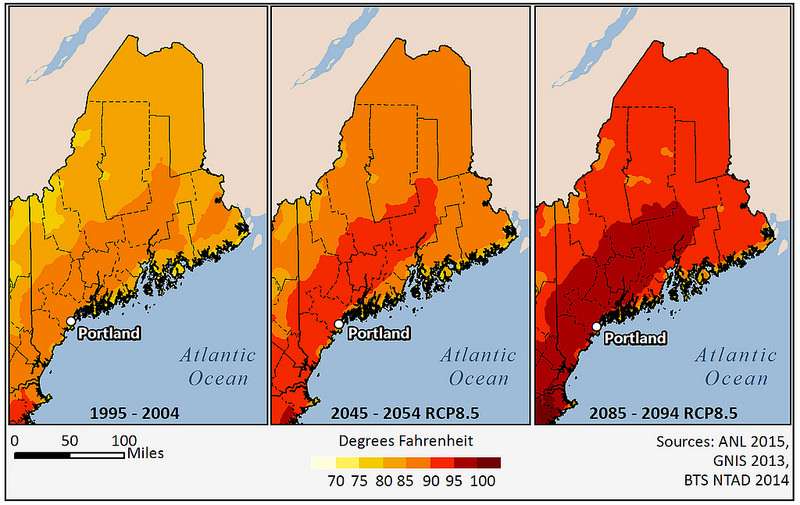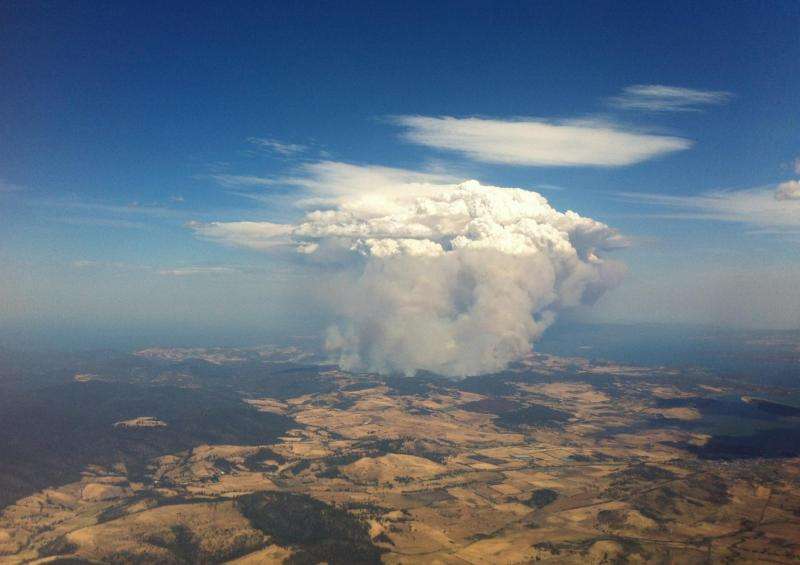Are America's cities prepared for the drought, heat, and floods of climate change?

From September 2012 until March 2013, Australia sweltered. And burned.
The worst heat wave recorded in the continent's history sent temperatures soaring well over 100°F for weeks. Fires spread along the coasts and across Tasmania. In the Outback, roads melted.
News reports called it the "angry summer." It was so bad that it literally changed the map: meteorologists had to add two new color bands to their maps on the evening weather reports, to go up to 130°.
So Australians turned on the air conditioning. The electric grid suffered in both Melbourne and Sydney. Urban railways were delayed as heat damaged the wiring. A report later that year found the heat wave was almost certainly beyond the bounds of natural climate variation.
Scientists agree that the future will bring higher temperatures for longer periods of time, higher sea levels, and both more droughts and more storms. "This means that our infrastructure, as it exists today, isn't going to be able to operate at the same level in the future," said Megan Clifford, deputy director of the Risk and Infrastructure Science Center at Argonne.

Infrastructure is, by design, largely unnoticed until it breaks and service fails. It's the water supply, the gas lines, bridges and dams, phone lines and cell towers, roads and culverts, train lines and railways, and the electric grid; all of the complex systems that keep our society and economy running.
Engineers typically design systems to withstand reasonable worst-case conditions based on historical records; for example, an engineer builds a bridge strong enough to withstand floods based on historical rainfall and flooding. But what happens when the worst case is no longer bad enough?
"If we don't adapt the systems, they will break," said Duane Verner, an urban planner who works with Clifford.
"When you look at cities' long-term plans, which every city has—and they go out decades for planning major infrastructure—they rarely have local climate projections available for their planning assumptions or design criteria," Clifford said.
A major difficulty, she explained, is that it's difficult for city planners to look at a large-scale climate model and understand the impacts to their local area.
That's where Argonne scientists and researchers are bridging the gap. Argonne's infrastructure experts are just a building over from climate scientists in the environmental science division and supercomputing resources at the Argonne Leadership Computing Facility. They can develop and interpret the complex global climate models to predict the effects of climate change by region.
The Risk and Infrastructure Science Center can pull all of these forces together with other subject matter experts, including engineers and analysts with experience in various infrastructure industries. Combining these resources helps them develop practical and comprehensive analyses for planners. These tools not only help city planners analyze risks, but also prioritize them in light of tight budgets.
One type of analysis that Argonne frequently conducts is called an RRAP—the Regional Resiliency Assessment Program. Every year, the U.S. Department of Homeland Security funds several assessments that each look at a particular area's vulnerabilities.
Verner is part of a team working on an RRAP for the Casco Bay region of Maine. Like other regions they've studied, they are finding that floods, heat waves, and other changes predicted for Maine could cause trouble for its infrastructure.
For example, in general, power plants don't like heat—their output declines, some types more than others. The same is true for transmission lines; they lose some ability to carry electricity in the heat.
"This change is in the margins, but when you add that together with increased demand for power to run air conditioning, for example, you can cross the thresholds for brownouts," Verner said.
Then there's rain. "The climate models are showing that increases in extreme precipitation events are projected for the entire U.S., because there's more humidity in the atmosphere," Verner said, "and structures like culverts, that are built to standards for past historical rainfall events, won't be able to accommodate this rush of rain." (Culverts are pipes that channel streams and water underneath roads.)
Too much rain all at once causes floods, and floods are devastating to infrastructure. Water is extraordinarily destructive. Hurricane Sandy shut down New York City, one of the largest, most prosperous cities in the world, for days. Floods wash out roads and bridges, damage homes, schools, and buildings, and overwhelm sewer systems, causing sewage dumps into local waterways; the economic impact can be severe. Sandy caused $65 billion worth of damage.
At the same time, we've also seen record droughts in recent years. "Generally, planners are using historical records for droughts in their water resource planning processes, and our climate models show that, in many cases, historical records won't provide an adequate worst-case scenario to plan for," Verner said. "It will be much worse."
Droughts are financially ruinous for farmers and agriculture; that same year as Sandy, 2012, saw a Midwest/Plains drought that cost $35 billion.
That drought saw the mighty Mississippi River drop to such low levels that shipping on the river, which normally carries billions of dollars of cargo every month, was nearly halted. "I have never seen anything like it," Colonel Chris Hall, commander of the Corps of Engineers' St. Louis District, told the Chicago Tribune.
In response, Argonne researchers scrambled to analyze the potential economic impacts if water levels dipped below a certain point on the middle Mississippi River. Billions of dollars of cargo are shipped on the river every month; power plants pull cooling water; and local communities draw water, including drinking and irrigation water. The analysis quantified the thousands of jobs and billions in income that could be in jeopardy across six states for a worst-case scenario drought.
These kinds of analyses help federal, state, and local governments understand stakes and prioritize action. With the help of the Risk and Infrastructure Science Center, as well as resiliency efforts in multiple areas at Argonne, planners can find out the types of stresses their cities and regions will face in the future.
Infrastructure is generally an ounce-of-prevention game; smart changes now can save a region billions of dollars in damages and lost economic productivity in the future. Communities can ration water from aquifers, shore up electric grids, and build roads out of water's reach. New estimates of rainfall help engineers determine what kind of storms their bridges should withstand; power companies can estimate energy demand in upcoming heat waves. They just need to know what they're facing.
"Our goal is to help planners get the information they need to do their jobs, and to drive national efforts for future resilient infrastructure design," Clifford said.
With the ongoing involvement of Argonne and the scientific community, infrastructure can be adapted and designed to withstand the changes ahead—before it breaks.
Provided by Argonne National Laboratory



















